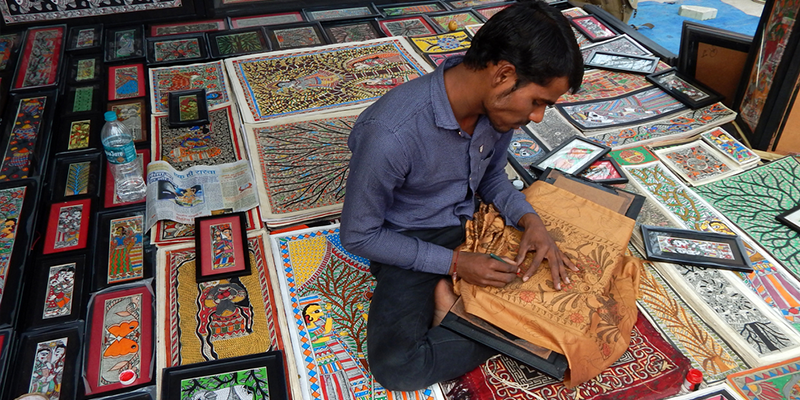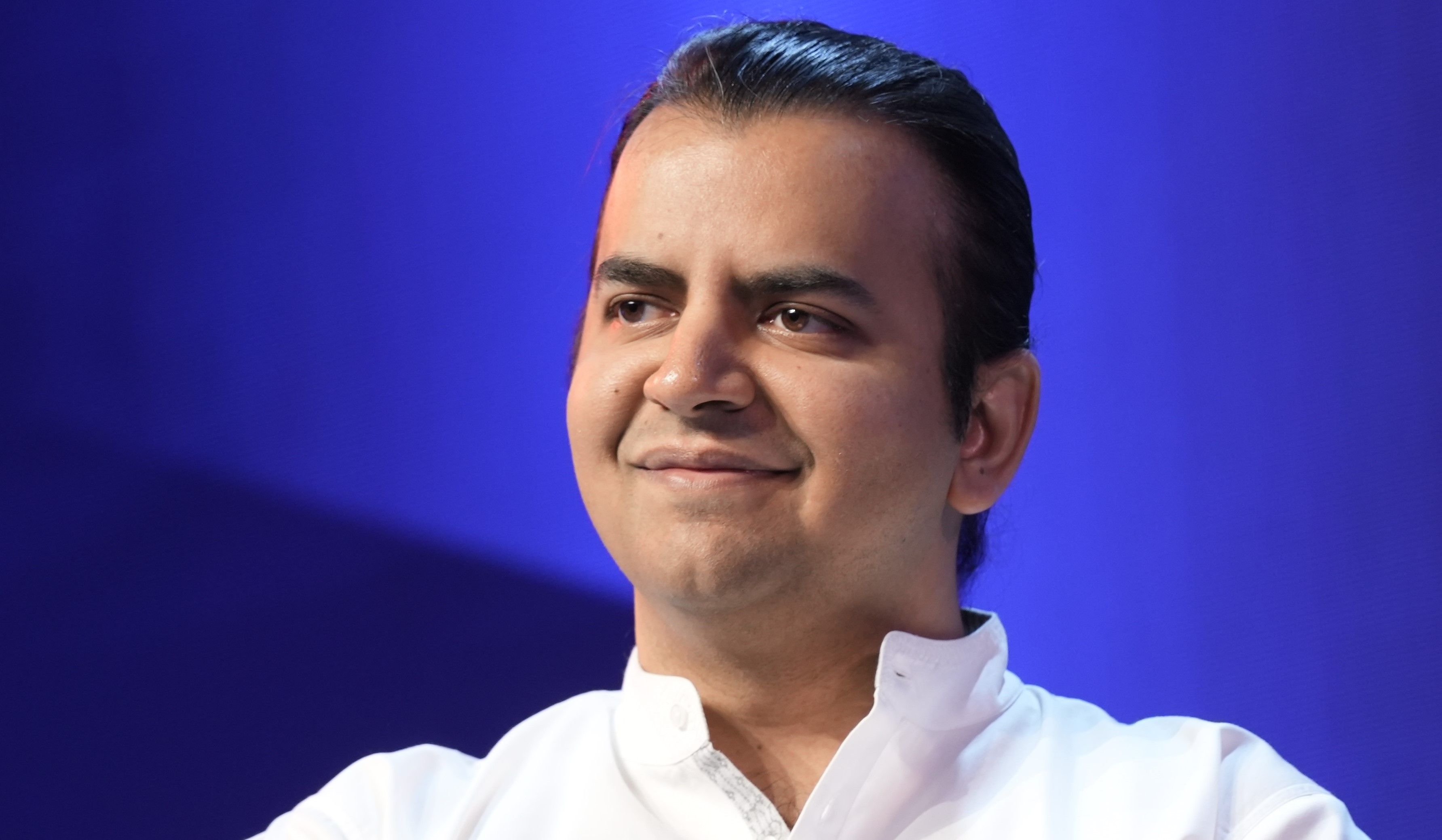Bengaluru's Chitra Santhe empowers 1500 artists annually, here's why and how
With more than 1,500 artists — from West Bengal, Odisha, Andhra Pradesh, Mumbai, and Bihar — exhibiting their work, the two-kilometre-long stretch became a living art gallery.

Colours, textures, paintings, sculptures, murals, cartoons, sketches, body art, and more awaited the four lakh people who thronged Kumar Krupa Road as the annual Chitra Santhe greeted Bengaluru with its 15th edition. With more than 1,500 artists— from West Bengal, Odisha, Andhra Pradesh, Mumbai, and Bihar— exhibiting their work, the two-kilometre-long stretch became a living art gallery.
“What makes Chitra Santhe unique is that this event provides me with an opportunity to interact with the art community, the artists directly. I also like the whole setup with its festival atmosphere” says Saloni Bhatia, who has been frequenting this santhe every year since 2013.

Annually organised by the Karnataka Chitrakala Parishath (CKP) as a tribute to their founder, Nanjunda Siri, Chitra Santhe has become a medium for artists to not only display their work but also find a ready marketplace to sell their crafts.
A lifeline for artists
Over the years, Chitra Santhe has gained a mass following and come the new year, citizens of Bengaluru and nearing towns and cities await the first Sunday fete eagerly.

Apart from the visual treat, the santhe gains importance due to its outreach— connecting with artists in remote Odisha who continue to practise traditional art forms crafted with cloth called Pattachitra or Tanjore paintings of Tamil Nadu or even the Madhubani of Bihar.
“The art lovers in the city have always been kind. Every year my team showcases many traditional art forms including 12th-century pattachitra, brass and dhokra works, palm-leaf etching, and Santhal and Saora paintings. We earn close to Rs 50,000 through this mela. We also get the opportunity to exhibit at other Karnataka Chitrakala Parishad fairs as well,” says Raghunath N.

His team comprising three artisans travels from Puri, Odisha, each year on trains with boxes filled with their creations. With artists increasingly opting for the digital medium, the traditional art form of Odisha is limited to very few artists in Raghurajpur district. While it makes survival difficult, Raghunath feels it is his duty to continue the legacy of his ancestors.
“I was amazed to see the public’s interest in art. Personally for me it was more than expected. I got very good appreciation for my art work and was able to sell it as well. The reality is that the market for artists like us is very tough,” says Shilpa Prajapat from Jaipur, Rajasthan, who exhibited her painting for the first time at Chitra Santhe this year.

A graduate from Ajmer, Shilpa believes that platforms such as this give an artist much-needed financial help. Priced anywhere between Rs 100 and above a lakh, nearly 90,000 paintings and other art works were up for sale at the art fete.
Apart from ChitraSanthe, Shilpa depends on art galleries and group and solo exhibitions for market reach. However, this medium caters primarily to a niche audience.
Financial help required
Yet all the artists were not lucky like Shilpa. Many complained that space constraints forced them to set up their stalls away from the main streets, which hampered sales.

“Chitra Santhe is great but the distribution of stalls was very poor. I got my stall inside the campus where people did not even come to look at the paintings. This is my fourth time at Chitra Santhe and the market is still poor for artists. Earlier we struggled to find space, this time we struggled to find people,” says K Manju, who has been a professional painter for the past seven years.
The CKP campus and the two-kilometre-long street can hold only a few hundred artists. The excitement about this fair, both among the participants and the public, highlights the need for a platform where thousands of craftsmen can showcase their art and at the same time have access to a market.

Sagar Mehta, an artist from Bengaluru who exhibited his paintings— watercolour, oil, acrylic, pencil, and charcoal— at Chitra Santhe two years ago, says:
“Fora non-established passionate artist like me, Chitra Santhe was a great experience. People bargain a lot and take advantage of artists from small towns. They are somehow forced to give away paintings and art at low prices at the end of the day.”
Chitra Santhe’s efforts deserve a salute and this fete is an example of how art can be brought out of the confines of galleries and studios and literally onto the streets for all citizens.
We’re already looking forward to the 16th edition of Karnataka Chitrakala Parishath’s annual showcase !











